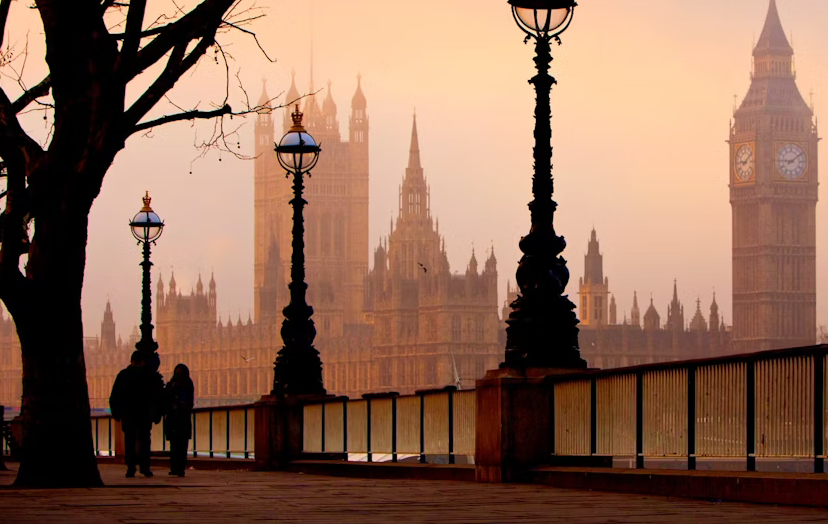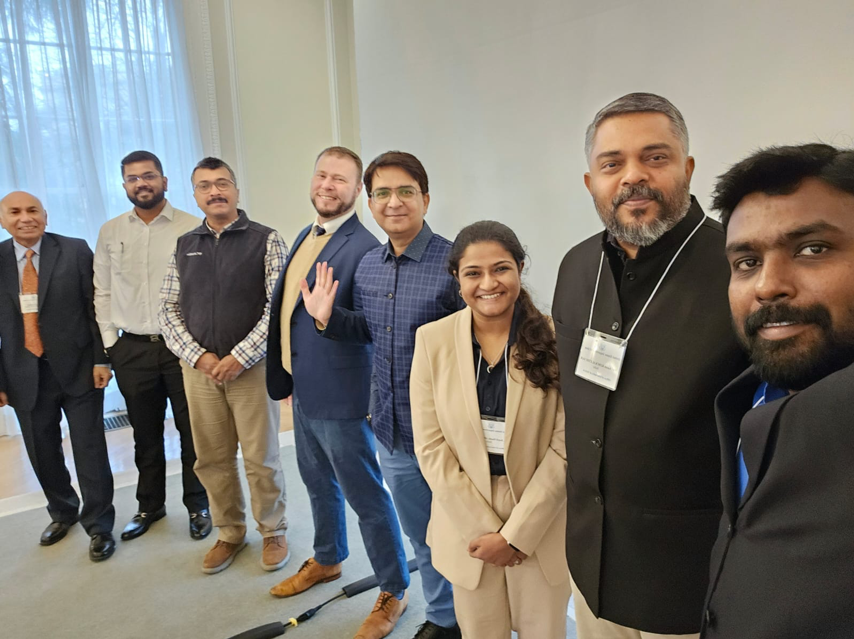Six countries in Europe have now passed nationwide or partial bans on face-veils, and others have legislation pending for additional bans. Speaking critically of either the bans or the Muslim practice of veiling engenders a firestorm of debate, as former Mayor of London and Secretary of State for Foreign and Commonwealth Affairs Boris Johnson did with an article in the Telegraph denouncing the ban in Denmark, while also bluntly criticizing in demeaning fashion the practice of covering the face.
The response to the controversy has largely focused on questions of free speech, with the Equality and Human Rights Commission (EHRC) labeling the remarks as “inflammatory and divisive” but not within its jurisdiction to prosecute.
Yet, what of the more fundamental question about the public expression of religious belief? Is it appropriate, as the European Court of Human Rights said in its 2014 ruling in S.A.S vs. France, that veiling must be restricted in favor of the principle of “living together” and promoting “tolerance and broadmindedness without which there is no democratic society.”
What are the implications of religious freedom for protecting the right to public expressions of faith, even those expressions which may seem to resist cultural assimilation?
To see all posts in this series visit: Debating Burqa Bans
At the start of last month, Denmark became the latest country in Europe — joining France, Belgium, the Netherlands and Germany–to completely or partly legislate against the wearing of burqas or niqabs in public. Muslim women who violate the ban risk being fined 1,000 kroner, and repeated violations can result in fines of up to 10,000 kroner ($1,550) and imprisonments of up to six months. Advocates of the burqa ban in Denmark have cited various justifications for the new law such as: public safety, desires to “liberate” oppressed Muslim women who wear the burqa or niqab, promote gender equality, and generally to improve the integration of Muslim women in the country. There are, however, serious flaws with the motives and justifications for the new law. In short, the law is unnecessary, will undoubtedly prove to be counterproductive, and reveals a rank hypocrisy on the part of the Danish government.
While the new legislation provides for a general provision prohibiting any “garment that covers the face in public”, it is popularly referred to as the “burqa ban”. This is an apt name for the new piece of legislation because there can be no doubt that the target of the new law is the burqa and the niqab, and the Muslim women who wear these garments. The only reason that the new legislation does not specifically mention burqas and niqabs, as an early draft version of the law did, is because Denmark’s human rights obligations and anti-discrimination provisions would have prohibited this.
The Danish Justice Minister and leader of the Conservative People’s Party, Søren Pape Poulsen, admitted as much in an interview with a Danish newspaper, Jyllands Posten, when he explained that the original draft of the law would be in violation of the Danish Constitution’s anti-discrimination provisions and as such, the subsequent proposal would prohibit other garments that cover the face, such as balaclavas.
The target of the new law, however, is and always has been the burqa and the niqab.
Søren Espersen, from the right-wing and Islamophobic Danish People’s Party, expressed his annoyance at “all the contortions we have to make in order to avoid “discrimination”. This is about the burka and niqab and nothing else. Let us just discriminate. I do not give a damn.”
Shortly after the burqa ban was approved by the Danish Parliament, Espersen’s party colleague, Martin Henriksen, stated that “the parliament says very clearly that the burka and niqab do not belong in Denmark. They are incompatible with Danish culture.”
The new legislation received overwhelming support in the Danish Parliament and not just from the right-wing parties but also from the main opposition party, the center-left Social Democrats. Back in 2014, the then-justice minister, Mette Frederiksen, opposed calls for a burqa ban, saying that “in my opinion it is out of proportion to start legislating about it.” A few years later and now as leader of the Social Democrats and the opposition, Frederiksen declared her support for a burqa ban. This is not entirely surprising because under Frederiksen’s leadership, the Social Democrats have increasingly taken a hard line on the issues of immigration and integration, in Frederiksen’s attempts to position her party closer to the Danish People’s Party, who will most likely hold the balance of power in the Danish Parliament after next year’s general election in the country. The target of the new law is and always has been the burqa and the niqab, and it would be utterly insincere and disingenuous to suggest otherwise.
But why are the burqa and the niqab such a “problem” for supporters of the new legislation? After all, there are very few Muslim women who wear the niqab and even fewer who wear the burqa. In 2009, researchers from the University of Copenhagen conducted a survey of Muslim women in Denmark and found that only around 200 women or 0.1-0.2% of Muslim women wear the niqab and none wear the burqa. According to the main author of that report, Margit Warburg, there is no evidence to suggest that this figure has dramatically increased since then. Only around 5% of Denmark’s 5.7 million inhabitants are Muslim and so what we are really speaking about is a minority out of a minority out of a minority. Ironically then, one could say that the first “problem”with Denmark’s new burqa ban is finding a burqa to ban.
An apparent concern for public safety and security was cited as one of the reasons why Denmark needed a burqa and niqab ban. Members of the Danish People’s Party stated that “a ban will strengthen safety for all of us [because] both terrorists and other criminals can blur their identity with face coverings while conducting terrorist acts of crimes.” The governing Venstre party has also used security concerns to justify their new position of supporting a burqa ban. They explained that while “Venstre has not previously supported a ban…times change and we have to change with them. Considerations have to be given to public safety. The terrorist threat to Denmark is serious [and, as such] we need to be able to see each other’s face in the public space.”Venstre’s change of position on the burqa ban has arguably more to do with their desire to maintain the support of the Danish People’s Party, who provide the crucial support in the Danish Parliament needed for Venstreto remain in power, and less to do with genuine security concerns.
Denmark is not suffering from a crime spree conducted by groups of burqa clad Muslim women. Muslim women in burqas or niqabs, or anyone in a burqa or niqab, have not been involved in any of the recent major terrorist incidents in Denmark. Furthermore, the European Court of Human Rights, in its famous ruling in SAS v. France, made it clear that blanket bans on burqas and niqabs cannot be justified with reference to concerns for public safety.
The serious problem with the “public safety” argument is that it perpetuates the negative stereotyping and prejudice that associates all Muslims with violence and terrorism. It fuels the idea that Muslims are different and do not belong, heightens tensions in local communities, and alienates the overwhelming majority of Muslims who oppose terrorism and are actually vital allies in the fight against violent extremism. This is where the new law will also prove counterproductive.
The Social Democrats leader, Mette Frederiksen, has claimed that the burqa is a symbol of women’s oppression. She justified her support for the burqa ban by saying, “I support gender equality, and the purpose of the burka is to make women invisible in the public space.” Preben Bang Henriksen, from the Venstre party,expressed his unhappiness that“a large group of women in this country cannot be integrated” and the need to “ensure that [these women] do not act in a way that they cannot be integrated.”Claims that a burqa ban promotes gender equality while helping to integrate women who wear the niqab or burqa have been popular justifications offered by supporters of the new law. The same arguments were advanced by supporters of France’s burqa ban but, eight years on, it is clear the law has been counterproductive, and Denmark now risks suffering the same consequences.
French sociologist and filmmaker, Agnès De Feo, has claimed that France’s burqa ban has been “a total failure”. Speaking about the situation in France now, she has explained that “we now live in a society where p
eople think it’s normal to insult Muslim women wearing the full veil just because they are disobeying the law.”Indeed, there has been a series of disturbing incidents in France over the last few years were Muslim women have been attacked and had their face coverings forcibly removed. One of the most disturbing of these incidents was a case in which a pregnant Muslim woman wearing a veil was violently attacked by two men; shortly after the attack she suffered a miscarriage. This incident, which occurred in the spring of 2013, took place only a few weeks after another Muslim woman wearing a veil was also attacked.
The laws of a country can influence how its citizens behave. History shows us that we should never underestimate the dangerous power and consequences of a discourse of intolerance. Denmark’s new burqa ban sends a message that Muslims are not Danish and that they are a threat to Danish values. The new law risks further stigmatizing and scapegoating Muslim women, and increases the likelihood that Muslim women will suffer intimidation, harassment, and even violent attacks.
At a time when OECD figures reveal that religiously motivated hate crimes (with the majority of victims being Muslim) are on the rise in Denmark, this is not a case of alarmism but rather of real,serious concern. In fact, the first woman to be fined under Denmark’s new law was involved in an altercation with a woman who tried to rip her niqab from her head. Far from liberating Muslim women,the new law will foster a sense of exclusion and restriction as women who wish to wear the niqab or burqa feel essentially imprisoned in their own homes, unable to leave dressed in accordance with their own desires.
A 2013 report from the Open Society organization found that more Muslim women were staying at home after France’s burqa ban because they felt less safe on the streets of France, fearful of being subject to harassment and violence. The new law could actually also potentially encourage the wearing of the burqa and the niqab as Muslim women stand up and take a stand, refusing to allow the state to determine what they can and cannot wear. Another argument used to support a burqa ban is the claim that Muslim women who wear the burqa and niqab are forced to wear it by their oppressive husbands. The 2009 study by the University of Copenhagen researchers, cited earlier, found no evidence that any women felt forced to wear the niqab. This aside, there is an absurd logic behind the idea of criminalizing those whom one considers victims, of replacing the social control of the husband with the social control of the state. The new law does nothing to promote gender equality, and it will not help integration as the entire Muslim community sees it as yet another attack on them.
Finally, the new law also reveals a disturbing hypocrisy on the part of the Danish government. It is quite simply illiberal to dictate to others what they can and cannot wear. It is hypocritical to purport to be a liberal country, yet use the force of the state to legislate on aspects of women’s clothing, and to criminalize them for failure to comply. As Fotis Filippou, Amnesty International’s deputy director for Europe, said on the passing of Denmark’s new burqa ban, the new law “makes a mockery of the freedoms Denmark purports to uphold.” The promotion of human rights is at the centre of Denmark’s foreign and development cooperation policies, but this new law will seriously hinder Denmark’s effectiveness in this important area.
What moral authority and legitimacy does Denmark now have to criticize countries such as Saudi Arabia and Iran with regards to their treatment of religious minorities?Denmark now says that it will punish any woman who does not dress the way it thinks women should dress. Saudi Arabia and Iran also punish women who fail to dress the way they want women to dress. It is very simple, as Fotis Filippou explains:“all women [everywhere], should be free to dress as they please, to wear clothing that expresses their identity or beliefs [including religious beliefs].”
Denmark’s new burqa ban should concern everyone who values the importance of religious freedom and who believes in the right to live out one’s religious beliefs free from state interference or coercion.
The target of the new law is the burqa and niqab but, already the Danish People’s Party have turned their attention to the head scarf, launching a new poster campaign that tells women to “throw off the headscarf and become part of Denmark.” Given the rise in religious apathy and intolerance towards religion generally, who knows what will come next; tomorrow the cross or the yarmulke could be the next target. This is why it is important now, more than ever, for all freedom-loving people to come together, to stand together and oppose this unnecessary, counterproductive and hypocritical law.
Kareem P. A. McDonald is a Program Associate of the Religious Freedom Institute’s Islam and Religious Freedom Action Team. He has an MA in Advanced Migration Studies, an LL.M in International Human Rights Law, an M.Phil in History, and a BA in Modern History and Political Science obtained through studies in the UK, Ireland, and Denmark. Kareem has previously worked at the Northern Ireland Human Rights Consortium and the Danish Institute for Human Rights. Kareem is based in Copenhagen, Denmark. His research has included a study of religious freedom in Danish asylum centers.
All views and opinions presented in this essay are solely those of the author and publication on Cornerstone does not represent an endorsement or agreement from the Religious Freedom Institute or its leadership.
THE RFI BLOG

Religion, the ‘Russian World,’ and the War Against Ukraine

Religious Freedom Is Back on the UK’s Agenda

Be More Faithful, Become More Resilient: An Invitation to Religious Institutions

How Soccer Reveals Different Meanings Of ‘Secular’ In France And The US

RFI’s Ismail Royer Meets with Delegation from India
CORNERSTONE FORUM

Public Bioethics & the Failure of Expressive Individualism

Religious Liberty in American Higher Education

Scotland’s Kate Forbes and the March of Secularism

70 Years of Religious Freedom in Sweden: Prospects and Challenges


